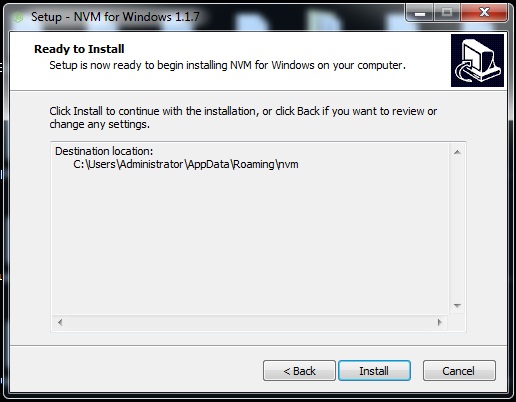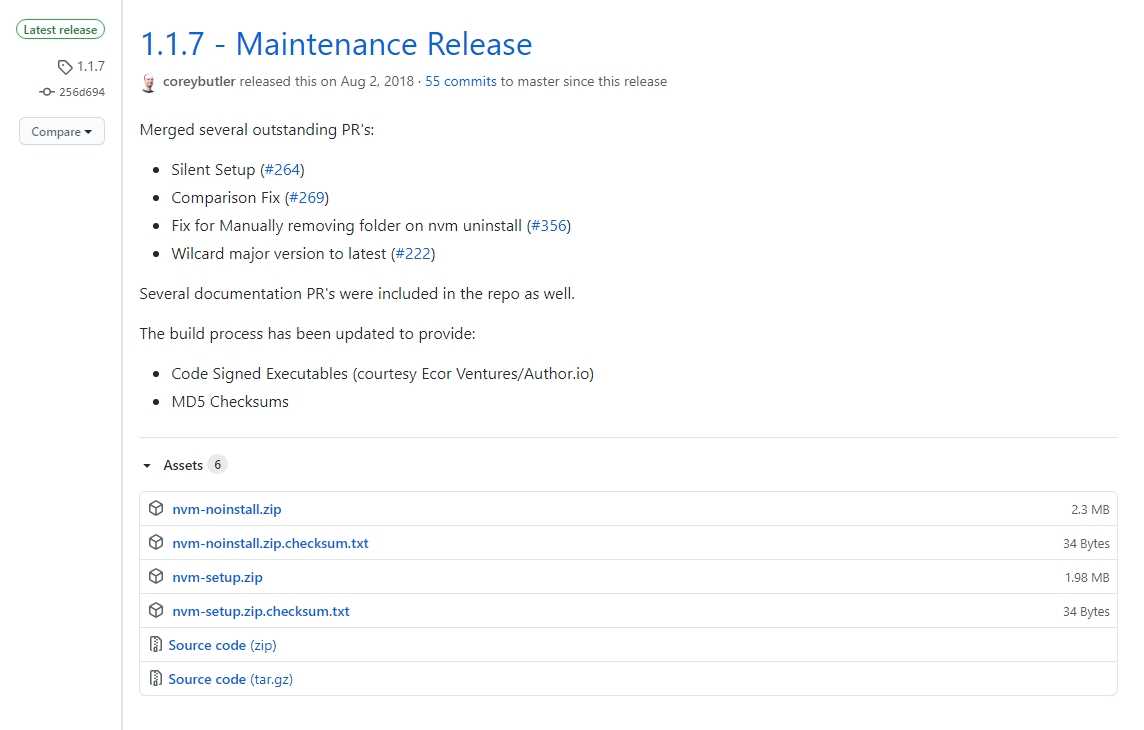
- #NVM INSTALL NODE 7 HOW TO#
- #NVM INSTALL NODE 7 UPDATE#
- #NVM INSTALL NODE 7 SOFTWARE#
- #NVM INSTALL NODE 7 CODE#
- #NVM INSTALL NODE 7 DOWNLOAD#
You can also login to bash prompt using bash -login command. Please ensure test user has access to exec bash command otherwise it will throw an error "bash: exec: No such file or directory". You can start a new bash prompt from current prompt by running exec bash command. You can use any of them as per your convenience. You can restart terminal by below 3 ways. "$NVM_DIR/bash_completion" # This loads nvm bash_completion Step 4: Restart Terminal => Close and reopen your terminal to start using nvm or run the following to use it now: => Appending bash_completion source string to /root/.bashrc => Appending nvm source string to /root/.bashrc => Downloading nvm as script to '/root/.nvm' You can go to GITHUB Page and find the latest one to install. At the time of writing this tutorial, v0.35.2 is the latest one. I have installed the latest Node Version Manager(NVM) from GITHUB Page.

#NVM INSTALL NODE 7 DOWNLOAD#
Now you need to download and install NVM using below command.
#NVM INSTALL NODE 7 UPDATE#
Step 2: Update Your Systemīefore installing NVM in your server, you need to upgrade all the installed packages in your System using sudo apt-get upgrade sudo apt-get update
#NVM INSTALL NODE 7 HOW TO#
Go to How to add User into Sudoers on Ubuntu 18.04 article to check how to provide sudo access to user. In this tutorial, I am logged in as test user which has sudo access.
#NVM INSTALL NODE 7 CODE#
It is mostly required to test your code and libraries for backward compatibility.īefore you go through the steps to install nvm for node.js in your system, it is very important to fulfill prerequisites criteria first.Īlso Read: An Introduction to Javascript Step 1: PrerequisitesĪ)You need to have a running Ubuntu 18.04 System.ī)You must logged in as root or any other user having sudo access to run all commands. It is used to install and manage various different versions of Node.js in a System.

This tool allows him to switch his node version back and forth with the use of a simple command. This tool makes developers life little easy by providing the features of using and managing different node versions for multiple projects in a single system. Node Version Manager(NVM) is the most widely used tool for node.js version management.

If you have any queries regarding this please don’t forget to comment below.In this tutorial, I will take you through the steps to install NVM for Node.js on Ubuntu 18.04. You have successfully learned how to install Node.js with npm on CentOS 7. To uninstall a Node.js version type following command You can change the current default version of Node.js by using the following command. To list all the versions installed run following command. Nvm install 8.14nvm install –ltsnvm install 11.3 You can install multiple versions of Node.js. Now install Node.js by using the following command. So download NVM installation script running the following command.Ĭurl -o- | bash How to install Node.js and npm using nvm on CentOS 7Īs shown in the above output you should close and reopen terminal.Ĭheck nvm version and confirm installation typing If you want to install or uninstall different versions of Node.js then NVM is there for you.įirst, we will install NVM (Node Package Manager) on your system.

NVM stands for Node Version Manager which is used to manage multiple Node.js versions. Now confirm the installation of Node.js by using the following commandĪnd confirm npm installation with the following command When it will prompt you to retrieve GPG key just press ‘y’ to continue. Now you can install Node.js by using the following command. NOTE : The latest LTS version of Node.js is 10.x if you want to install 8.x version then just replace setup_10.x with setup_8.xĪfter executing above command NodeSource repository is enabled. Add it by using curl running following command. Install Node.js and npm using EPEL repositoryįirst you will need to add NodeSource yum repository on your system. You must have the non-root user account on your server with sudo privileges.
#NVM INSTALL NODE 7 SOFTWARE#
npm is the worlds largest software registry for Node.js packages with thousands of packages available. Where npm stands for Node Package Manager which is the default package manager for Node.js. Node.js built on Chrome’s V8 JavaScript engine so it can be used to build different types of server-side application. Node.js is the opensource JavaScript Run-time environment for server-side execution of JavaScript code. In this tutorial, we are going to learn how to install Node.js with npm on CentOS. How to install Node.js with npm on CentOS 7 Install Node.js with npm on CentOS


 0 kommentar(er)
0 kommentar(er)
